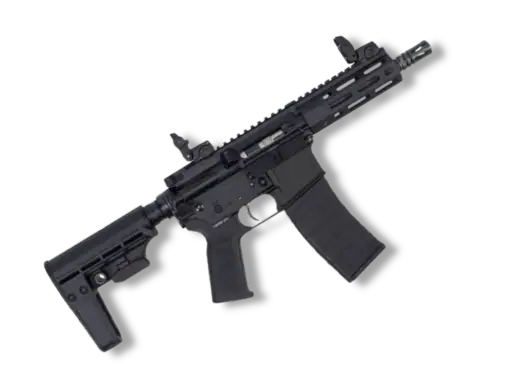Guns and firearms have played a significant role in human history, serving purposes ranging from hunting and self-defense to military conflict and law enforcement. Understanding the different types of firearms, their functions, regulations, safety measures, and cultural impact is essential for appreciating their complexity and significance. In this comprehensive guide, we’ll delve into the world of guns and firearms, covering their evolution, applications, legal framework, safety considerations, and more.
1. Introduction to Guns and Firearms:
Guns and firearms are devices designed to launch projectiles at high velocity using controlled explosive force. They come in various forms, including rifles, handguns, shotguns, and automatic weapons, each with its own unique characteristics and applications. From ancient hand cannons to modern assault rifles, firearms have evolved significantly over time, reflecting advances in technology, manufacturing, and warfare.
2. Historical Evolution of Firearms:
The history of firearms traces back thousands of years, with significant milestones shaping their development:
- Early Firearms: The earliest known firearms, such as hand cannons and arquebuses, emerged in China and Europe during the 13th century, using gunpowder as a propellant.
- Renaissance Firearms: The invention of the matchlock, wheellock, and flintlock mechanisms during the Renaissance period improved firearm reliability and ignition methods.
- Industrial Revolution: The Industrial Revolution led to mass production techniques, allowing firearms to be manufactured on a large scale and standardized for military use.
- Modern Firearms: The late 19th and 20th centuries saw the invention of breech-loading rifles, semi-automatic pistols, and fully automatic machine guns, revolutionizing warfare and civilian shooting sports.
3. Types of Firearms:
Firearms can be classified into several categories based on their design, function, and intended use:
- Rifles: Long-barreled firearms with rifled barrels designed for accuracy and range. They are commonly used for hunting, sport shooting, and military applications.
- Handguns: Compact firearms designed to be held and operated with one hand. They include pistols, revolvers, and derringers, primarily used for self-defense and law enforcement.
- Shotguns: Firearms with smoothbore barrels designed to fire a spread of pellets or a single slug. They are popular for hunting, home defense, and sport shooting.
- Automatic Weapons: Firearms capable of firing multiple rounds with a single trigger pull, including submachine guns, machine guns, and assault rifles. They are used by military and law enforcement agencies for combat and suppression fire.
- Specialty Firearms: This category includes firearms designed for specific purposes, such as sniper rifles for precision shooting, shotguns for breaching doors, and anti-material rifles for long-range target engagement.
4. Functionality and Operation:
Firearms operate on basic principles of physics and mechanics, involving several key components:
- Action Type: The mechanism by which a firearm loads, fires, and ejects cartridges. Common action types include bolt action, lever action, pump action, semi-automatic, and fully automatic.
- Firing Mechanism: The mechanism that ignites the propellant, typically a firing pin striking the primer of the cartridge.
- Barrel and Chamber: The barrel is the cylindrical tube through which the projectile travels, while the chamber holds the cartridge before firing.
- Trigger Mechanism: The part of the firearm that initiates the firing sequence when pressed by the user.
- Safety Features: Built-in mechanisms to prevent accidental discharge, such as manual safeties, trigger safeties, and drop safeties.
5. Safety Considerations:
Firearms safety is paramount to prevent accidents and injuries. Key safety measures include:
- Treat Every Firearm as if it is Loaded: Always assume a firearm is loaded and handle it with care.
- Keep the Muzzle Pointed in a Safe Direction: Avoid pointing the firearm at anything you do not intend to shoot.
- Keep Your Finger off the Trigger: Only place your finger on the trigger when you are ready to shoot.
- Know Your Target and What is Beyond: Be aware of your surroundings and potential hazards beyond your target.
- Store Firearms Securely: Keep firearms locked in a safe or gun cabinet, with ammunition stored separately.
6. Legal and Regulatory Framework:
Firearms are subject to strict regulations and laws in most countries, governing their sale, ownership, and use. Regulations may include:
- Background Checks: Mandatory background checks to ensure individuals purchasing firearms are eligible and legally allowed to do so.
- Licensing and Registration: Requirements for obtaining permits or licenses to own firearms, with registration of firearms and serial numbers.
- Restrictions on Certain Types: Bans or restrictions on specific types of firearms, such as assault weapons or high-capacity magazines.
- Storage and Transport: Laws regarding the safe storage and transportation of firearms to prevent theft, accidents, or misuse.
7. Cultural Impact of Firearms:
Firearms have had a profound cultural impact, influencing literature, art, film, and society as a whole:
- Historical Significance: Firearms have shaped the outcome of wars, revolutions, and conflicts throughout history, altering the course of nations.
- Sport Shooting: Shooting sports, such as target shooting, skeet shooting, and practical shooting, are popular recreational activities enjoyed by millions worldwide.
- Self-Defense: Firearms provide individuals with a means of self-defense and protection against threats to their safety and property.
- Political Debate: Firearms ownership and gun control policies are hotly debated topics, with advocates and opponents arguing over constitutional rights, public safety, and personal freedoms.
- Pop Culture: Firearms have become iconic symbols in literature, film, and popular culture, often associated with heroes, villains, and larger-than-life characters.
Conclusion
In conclusion, guns and firearms are complex tools with a rich history, diverse applications, and significant cultural implications. Understanding their evolution, functionality, safety considerations, and legal framework is essential for responsible ownership and informed discourse. Whether used for hunting, sport shooting, self-defense, or military purposes, resilient-arms.com/product-category/guns-firearms remain an integral part of human society, embodying both the triumphs and challenges of our collective history.

